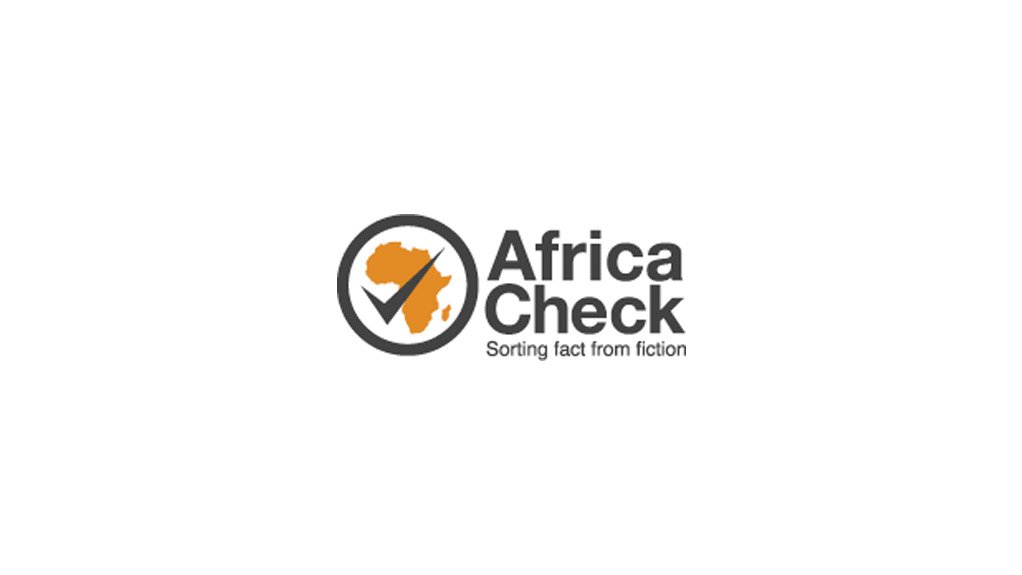As he begins the second half of his first term, Kenyan president William Ruto has been highlighting his achievements. One of his key talking points has been the jobs he claims were created by his controversial affordable housing plan.
While campaigning in 2022, Ruto promised to build 250 000 housing units a year. That figure has since been pared down to 200 000 homes annually, aiming for 1-million by 2027, although his own housing minister doubts if this is realistic.
The claim about jobs appears in his mid-term scorecard. We took a closer look. (Note: Africa Check has also fact-checked economic and health claims from the scorecard.)
In the March 2025 scorecard published in the government newspaper, MyGov, Ruto claimed 244,232 new jobs had been created in the construction sector.
But these numbers have kept changing in speech after speech:
- On 21 November 2024, he said the affordable housing plan had created 164 000 jobs.
- On 12 December, he raised it to 200 000, while noting only 1 200 units had been completed.
- He repeated the 200 000 figure in his New Year’s address on 31 December.
- By 25 February 2025, he said the number was “over 250 000”.
- On 31 March, in a media interview, Ruto said: “There are 200 000 Kenyans – 240 000 to be exact – ask Alice Wahome, working in our housing programme.” He referred journalists to his housing minister for the actual figures.
Kenya’s statistics bureau publishes job data in its annual economic survey.
The latest, published in 2024, covers 2021 to 2023 and shows the number of people working in construction across both public and private sectors.
In 2022, the formal construction sector had 231 700 jobs – not 17 744, as claimed in Ruto’s scorecard. This increased slightly to 236 000 in 2023 – a gain of 4 300 jobs.
These numbers cover all workers in the construction sector, including those involved in building projects, roads, railways, utilities, electrical work, plumbing and other specialised services.
In the informal sector, construction jobs rose from 419 700 in 2022 to 460 900 in 2023 – adding 41 200 jobs.
Thus, the total number of new construction jobs between 2022 and 2023 was 45 500.
Dr Macdonald Obudho, director general of the statistics bureau, told Africa Check that new data would be released in the next economic survey due in late April 2025.
The claim is incorrect. First, there were 231 700 construction jobs in 2022, not 17 744 as claimed in the scorecard.
Second, between 2022 and 2023 only 45 500 new construction jobs were created.
Third, while 2024 data is available yet, current trends don’t show signs of a construction boom, with cement use notably dropping.
Cement use falling – during a construction boom?
Here’s where things get confusing.
Ruto projected that over four years, building 840 000 houses would create a-million jobs. If we apply that ratio, 130 000 housing units would mean about 154 000 jobs. But that’s just theory – real life job creation depends on things like project timelines, how much labour is used, materials and supply chains.
Meanwhile, the data shows cement consumption is actually dropping, from 9.45-million tonnes in 2022 to 9.2-million in 2023, and further down to 8.47-million tonnes in 2024. Even January 2025 saw less cement use (801 588 tonnes) than January 2022 (845 087 tonnes).
If construction is booming as claimed by the administration, shouldn’t cement use be rising beyond 2022 levels? The parliamentary budget office has also flagged the decline, but linked it to stalled road projects.
Dr Eddie Simiyu, who teaches accounting and finance at the Kenyatta University in Nairobi, helped explain how mortgage refinancing works in the context of the claim.
He said that under the affordable housing plan, a special vehicle, in this case, the Kenya Mortgage Refinancing Company (KMRC), is set up to pool or raise low-risk funds. These funds are then given to banks and savings and credit cooperative societies (Saccos) which use them to offer cheaper home loans to buyers.
In short, the KMRC is a wholesale lender that helps make mortgages more affordable and accessible for low and middle-income Kenyans. It doesn’t lend directly to individuals.
2022 refinanced mortgages
According to KMRC’s 2022 report, it had refinanced 2,522 mortgages by December of that year.
In a financial statement published in March 2025, KMRC said it had refinanced 3 855 mortgages through 12 banks and Saccos by the end of 2024.
The African Development Bank, one of KMRC’s funders, confirmed in a March 2025 report that the agency had approved 3,915 refinanced mortgages and “disbursed funds for 3 855 affordable housing mortgages” by December 2024.
This means the number of additional mortgages between 2022 and 2024 was 1 333 disbursed and 1 393 approved, not 1 005 as the scorecard claims.
So the actual increase is between 53% and 55%, not 40%. Since the scorecard's numbers are inaccurate, we rate the claim incorrect.
This report was written by Africa Check., a non-partisan fact-checking organisation. View the original piece on their website.











